It looks like you're using an Ad Blocker.
Please white-list or disable AboveTopSecret.com in your ad-blocking tool.
Thank you.
Some features of ATS will be disabled while you continue to use an ad-blocker.
share:
originally posted by: aboutface
My head wants to argue that these were irrigation ditches because surely they didn't have equipment that could ride through mud like that way back when, but I can't think of how they would get through that unless they were powered by dinosaurs or something. It's a mind-blower for sure. Great find, OP! I love stuff like this.
Ah ok, sledge tracks could go that deep probably, right?
No one can argue these "Impressions" are not there. The question is what caused them.
"Surely they didn't have the equipment". The one thing I have learned about any discipline is, never take anything off the table of possibilities.
We always seem to commit ourselves to the first plausible explanation to what is found, and after that we move in a direction that excludes other possibilities. Just as you have done. It must be something we can understand. Do we really give ourselves enough credit?
I watched the complete video and was a little shocked when they shared that the ruts maintain their position, horizontally. That means it wasn't a standard axle and wheel that made these tracks. Each wheel was independently suspended from the "Cart". That, is high tech.
I am going to go out on a limb, as I always do. I believe in order to make sense of our ancient past we must not only push the boundaries of outer space, but of our minds as well.
In mythology there are a multitude of examples of people attempting to explain what they see. To me they are relaying in their best intellectual abilities, what they are witnessing. And it also appears to me that, we, you and I were not directly involved with this tech, to any really meaningful way. We, were not invited to the schools of higher learning. That wasn't our job in that time.
In the myth's there are stories that we were created as a work force, a slave race, but similar to our creators. Most stories state we were gold miners for the gods. Tracks of commerce??? Maybe. After all, what ever left those tracks was quite heavy. And the mere fact of their existence must mean someone was attempting to do something. I doubt seriously it was joy riding aliens. Well, maybe only alien to our limited grasp of reality.
There is another possibility and it has to do with the depth of the tracks. The soil they originally road over was excessively saturated with water. Even our heaviest equipment will not leave tracks that deep, unless the soil is saturated.
And the only thing that comes to mind, the myth of the great flood. Maybe a highly advance society was sending a "Rover" to earth to see if things had dried up yet. Just a thought.
I don't think they are that old. That said. Much technology exited long ago we will never know about. Different cultures killed and destroyed what
they did not like or understand many times. False gods lead man to do many stupid things. War make man want to propagate it's ways and destroy all
remnants of others.
These could be geological anomalies, where softer rock eroded or from glacial features of large stones/ rocks being dragged along shaping the mud
that turned to rock.
nsidc.org...
www.landforms.eu...
www.kelleysislandchamber.com...
nsidc.org...
www.landforms.eu...
www.kelleysislandchamber.com...
edit on 17-3-2015 by theabsolutetruth because: (no
reason given)
The odd thing is that those tracks look identical to those left day by a typical modern 4wd. - Toyota Land cruiser etc. Weird.....
a reply to: Nyiah
You just brought up another problem. The "bedrock" was not hardened rock when those tracks was made, but instead soft 'mud'. So how can you date it as "bedrock has been dated to 5.3 million years old". That is not accurate because the sand or ground were there before being rock. We can say that the sand on ground is 5.3 million years old, but who knows when it became rock?
Also it is worth noting that if you open up the first image in a new tab, you will see something that looks suspiciously a lot like tire treads in the rock.
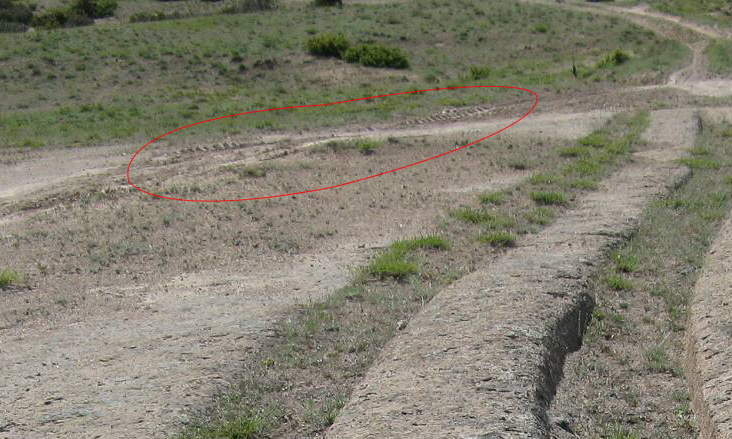
You just brought up another problem. The "bedrock" was not hardened rock when those tracks was made, but instead soft 'mud'. So how can you date it as "bedrock has been dated to 5.3 million years old". That is not accurate because the sand or ground were there before being rock. We can say that the sand on ground is 5.3 million years old, but who knows when it became rock?
Also it is worth noting that if you open up the first image in a new tab, you will see something that looks suspiciously a lot like tire treads in the rock.

Cart tracks very easy to explain. No not time travelling 4wd expeditions or Aliens from Mars. I know you want to believe its something extra ordinary
but its not. The Aztec / inca lines where done pretty much the same way, however they were done on purpose. Heres a Thought Imagine a Giant Wooden
city with cart roads everywhere. Now imagine after 5000 years all the buildings gone. What would be left if there was little to no vegetation. Move on
please. Next mystery to solve.
originally posted by: IndependentOpinion
a reply to: Nyiah
You just brought up another problem. The "bedrock" was not hardened rock when those tracks was made, but instead soft 'mud'. So how can you date it as "bedrock has been dated to 5.3 million years old". That is not accurate because the sand or ground were there before being rock. We can say that the sand on ground is 5.3 million years old, but who knows when it became rock?
Also it is worth noting that if you open up the first image in a new tab, you will see something that looks suspiciously a lot like tire treads in the rock.
And you know they were made before it hardened how?
a reply to: Vasa Croe
Look at the video. There are track that cross each other, breaking the lines of the 'previous' tracks. This is what we see everyday when one vehicle drives over the tracks of another in wet mud, they are not always crossing each other without breaking the tracks.
It all depends on how wet or dry the mud was when the tracks was made.
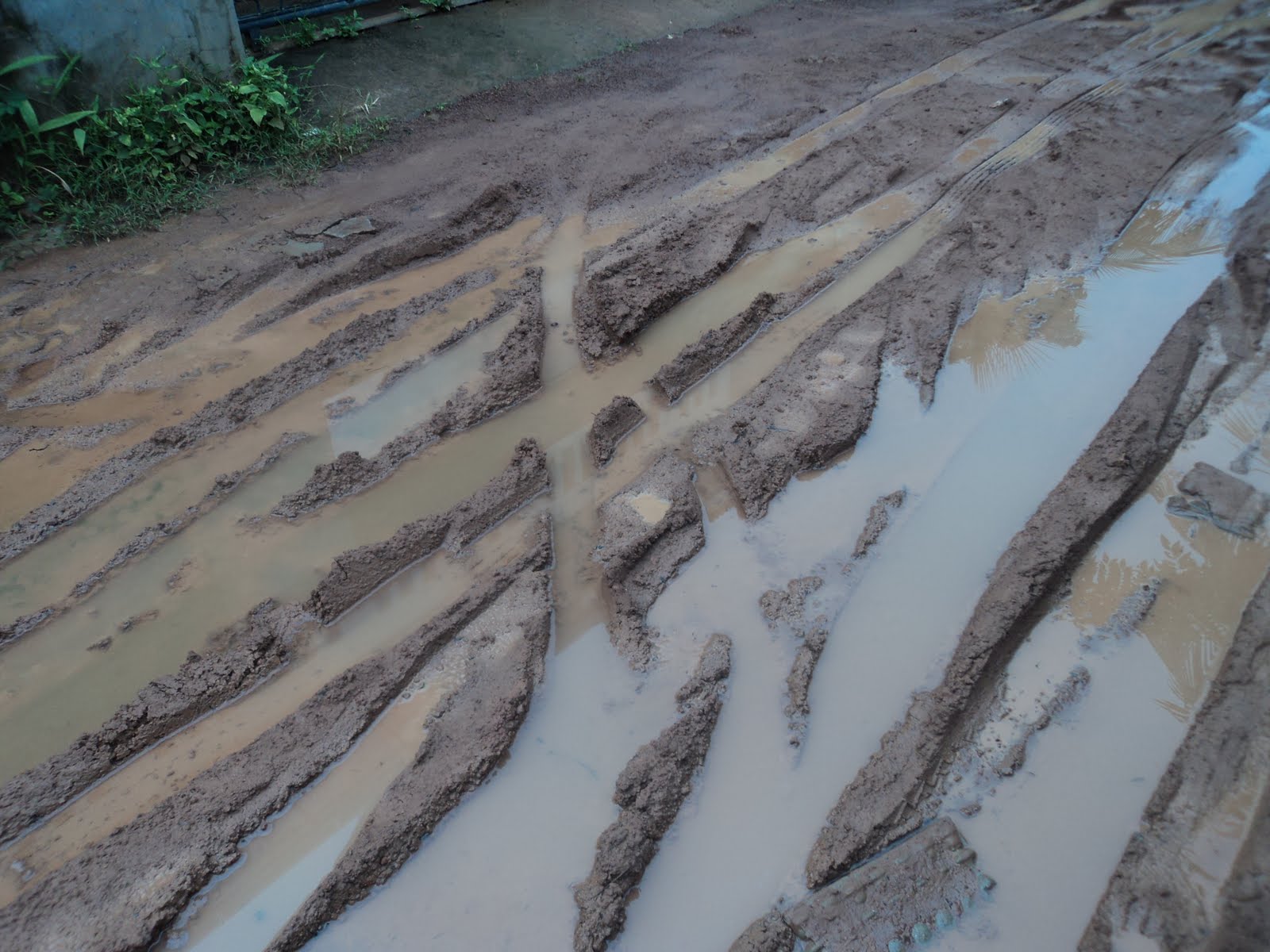

Look at the video. There are track that cross each other, breaking the lines of the 'previous' tracks. This is what we see everyday when one vehicle drives over the tracks of another in wet mud, they are not always crossing each other without breaking the tracks.
It all depends on how wet or dry the mud was when the tracks was made.


originally posted by: IndependentOpinion
a reply to: Vasa Croe
Look at the video. There are track that cross each other, breaking the lines of the 'previous' tracks. This is what we see everyday when one vehicle drives over the tracks of another in wet mud, they are not always crossing each other without breaking the tracks.
It all depends on how wet or dry the mud was when the tracks was made.
I can also take a file and drag it across a piece of metal in one direction then drag it across in another direction that overlaps causing two gauges in the metal that intersect. What's your point?
If something is dragged across or used long enough it becomes worn over time...similar to how natural erosion would work, but in this case it would be people dragging things like the carts I linked to earlier that are creating the wear, and a lot faster than nature would do it.
If you read the story that I linked to on this very site it is made clear it was an area with a lot of quarry work done and there are large monuments close by. Dragging and quarrying are the most likely causes of these ruts....
a reply to: Vasa Croe
Please try that and show us the results. If something was dragged over the rock, the starting point, (the back end of the object being dragged), would leave gradual indentations into the rock. This is because at the back end there is only friction scraping away on the surface, but the back end is pushing it away. The starting point of the tracks would gradually dig into the ground, not leaving a track that starts with an almost 90 degree indent into the ground. This is reality, and can be proven by experimentation, observed, and repeated, in other words, science.
The only point that you made that I would agree to as being possible, if that those tracks was made by heavy modern vehicles, not millions of years old as the OP suggested.
I can also take a file and drag it across a piece of metal in one direction then drag it across in another direction that overlaps causing two gauges in the metal that intersect.
Please try that and show us the results. If something was dragged over the rock, the starting point, (the back end of the object being dragged), would leave gradual indentations into the rock. This is because at the back end there is only friction scraping away on the surface, but the back end is pushing it away. The starting point of the tracks would gradually dig into the ground, not leaving a track that starts with an almost 90 degree indent into the ground. This is reality, and can be proven by experimentation, observed, and repeated, in other words, science.
The only point that you made that I would agree to as being possible, if that those tracks was made by heavy modern vehicles, not millions of years old as the OP suggested.
originally posted by: theabsolutetruth
Glacial Striations.
www.panoramio.com...
So, you think perfectly square rocks, drug by a Glacier caused these ruts, in Turkey?

Sorry, couldn't resist.
originally posted by: IndependentOpinion
a reply to: Vasa Croe
I can also take a file and drag it across a piece of metal in one direction then drag it across in another direction that overlaps causing two gauges in the metal that intersect.
Please try that and show us the results. If something was dragged over the rock, the starting point, (the back end of the object being dragged), would leave gradual indentations into the rock. This is because at the back end there is only friction scraping away on the surface, but the back end is pushing it away. The starting point of the tracks would gradually dig into the ground, not leaving a track that starts with an almost 90 degree indent into the ground. This is reality, and can be proven by experimentation, observed, and repeated, in other words, science.
The only point that you made that I would agree to as being possible, if that those tracks was made by heavy modern vehicles, not millions of years old as the OP suggested.
Wow...this is getting really ridiculous now. Let me clarify. If you take a hard object and drag it over another hard object over a period of years it will eventually wear a "rut" in it....
If you have ever been hiking on a trail in the woods that is a well traveled trail you will clearly see this. These tracks were not made in a single pass...they were worn in over years by people travelling the same route with the same method of pulling whatever they were pulling.
The story, which you obviously have not read, clearly explains that this was an are with many large stone structures....this is likely the quarry area, or was nearby and these are the ruts formed over time by moving heavy stones in the same manner on the same path.
The rock itself was already rock when this occurred. The rock is millions of years old. The ruts are not.
edit on 3/17/15 by Vasa Croe because:
(no reason given)
a reply to: All Seeing Eye
It was a suggestion. Which is more plausible than 53 million year old trucks.
I think the ''rocks'' look like mud, if you actually read the comments.
As for the sarcasm and stupid picture. Yawn.
continuouswave.com...
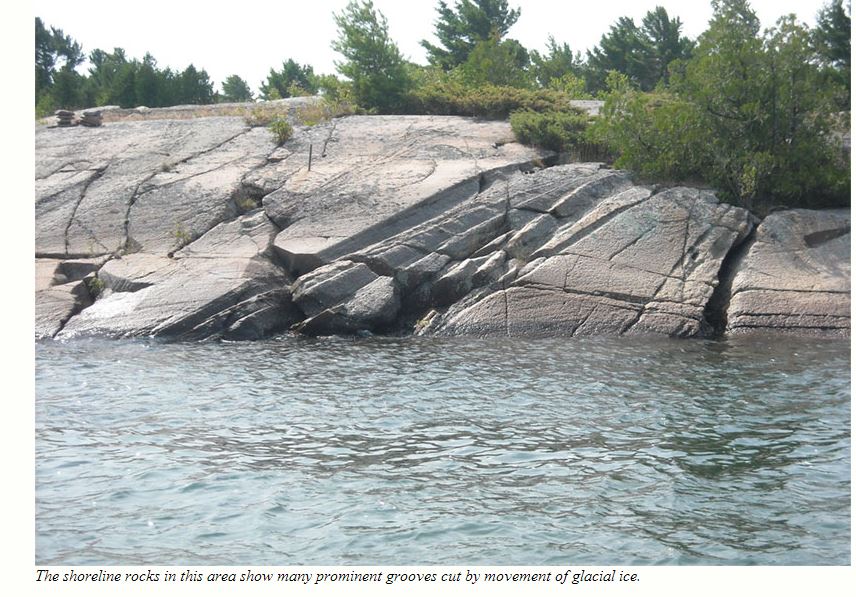
It was a suggestion. Which is more plausible than 53 million year old trucks.
I think the ''rocks'' look like mud, if you actually read the comments.
As for the sarcasm and stupid picture. Yawn.
continuouswave.com...

edit on 17-3-2015 by theabsolutetruth because: (no reason given)
originally posted by: Vasa Croe
I can also take a file and drag it across a piece of metal in one direction then drag it across in another direction that overlaps causing two gauges in the metal that intersect. What's your point?
If something is dragged across or used long enough it becomes worn over time...similar to how natural erosion would work, but in this case it would be people dragging things like the carts I linked to earlier that are creating the wear, and a lot faster than nature would do it.
If you read the story that I linked to on this very site it is made clear it was an area with a lot of quarry work done and there are large monuments close by. Dragging and quarrying are the most likely causes of these ruts....
That's right, the Phrygians do have monuments around, but still this is also an area of ancient volcanic activity. The picture below, (again in the same area) is food for thought, the horizontal lines on the left and right banks, are atypical of what you see inside a lava tube as the flows decrease they leave a marker line, and that's my take on it, at least at some stage for that part. But also there is a lot going on in that picture to attempt to make some sense of, and I would be interested to hear what yourself, and others think, given that the surface element is composed of volcanic ash..that is not to say though that there had not been other volcanic activity, like lava flow at some time before, or even many times before.
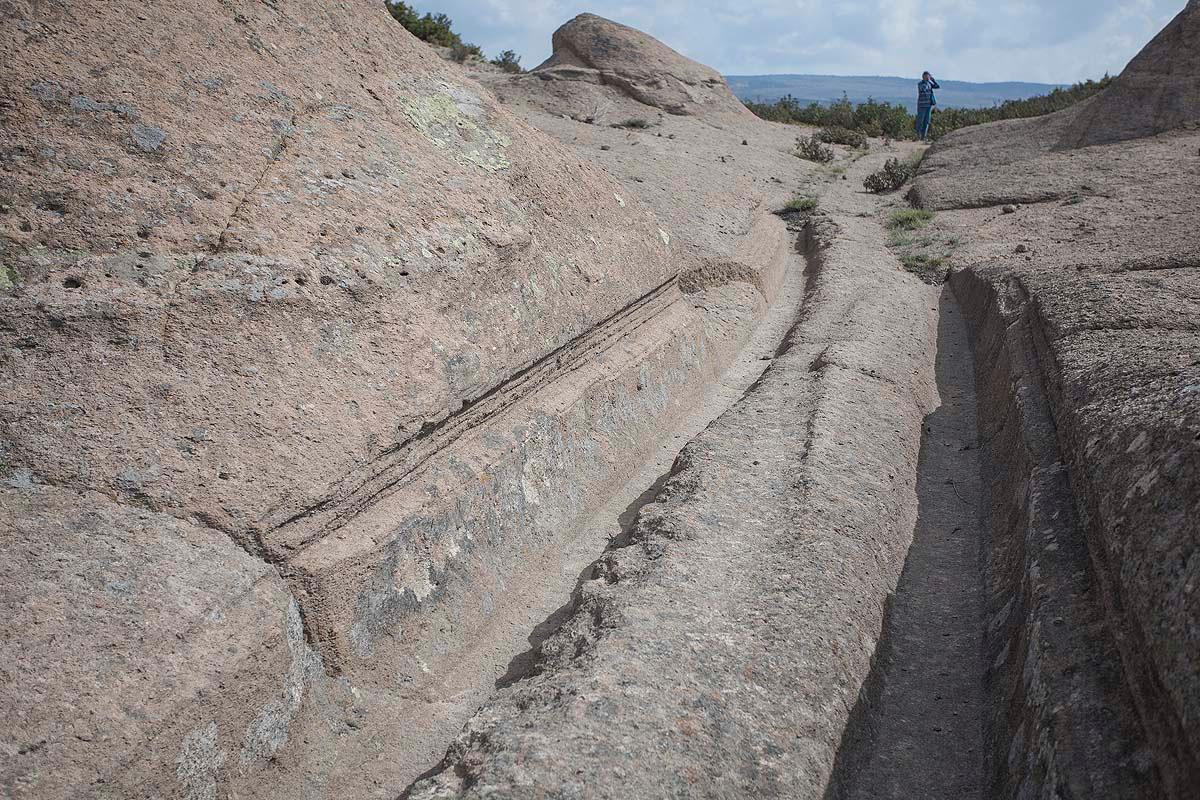
Better image here to magnify,
files.abovetopsecret.com...
a reply to: MerkabaMeditation
These are very similar to the tracks discovered in Malta. They were be lived to be created by dragging wooden sledges or carts across the bedrock as early as the second century. There was a study that the ground environment may have had a chemical reaction at this location that caused the tracks to erode further into the bedrock.
www.3universo.com...
Maybe the same conditions were present in Turkey which would suggest the time period would be considerable shorter than millions of years mentioned.
These are very similar to the tracks discovered in Malta. They were be lived to be created by dragging wooden sledges or carts across the bedrock as early as the second century. There was a study that the ground environment may have had a chemical reaction at this location that caused the tracks to erode further into the bedrock.
www.3universo.com...
Maybe the same conditions were present in Turkey which would suggest the time period would be considerable shorter than millions of years mentioned.
edit on 17-3-2015 by thepitpony because: (no reason given)
a reply to: Vasa Croe
It really is because you are not willing to think clearly.
That I know, lets move on...
I do like hiking, I go hiking about 3-5 times a year, for about 7 years now, and I have seen it. Moving on...
Where did I say that it was made with a single pass? Please show me?
Here you went from possible, maybe even plausible, to incorrect and not possible.
Let me add some visuals to help you out.
If you would place some object on the ground/stone, and pull/push it, the "rut", as you say, that will be cut over the years, would look like this:
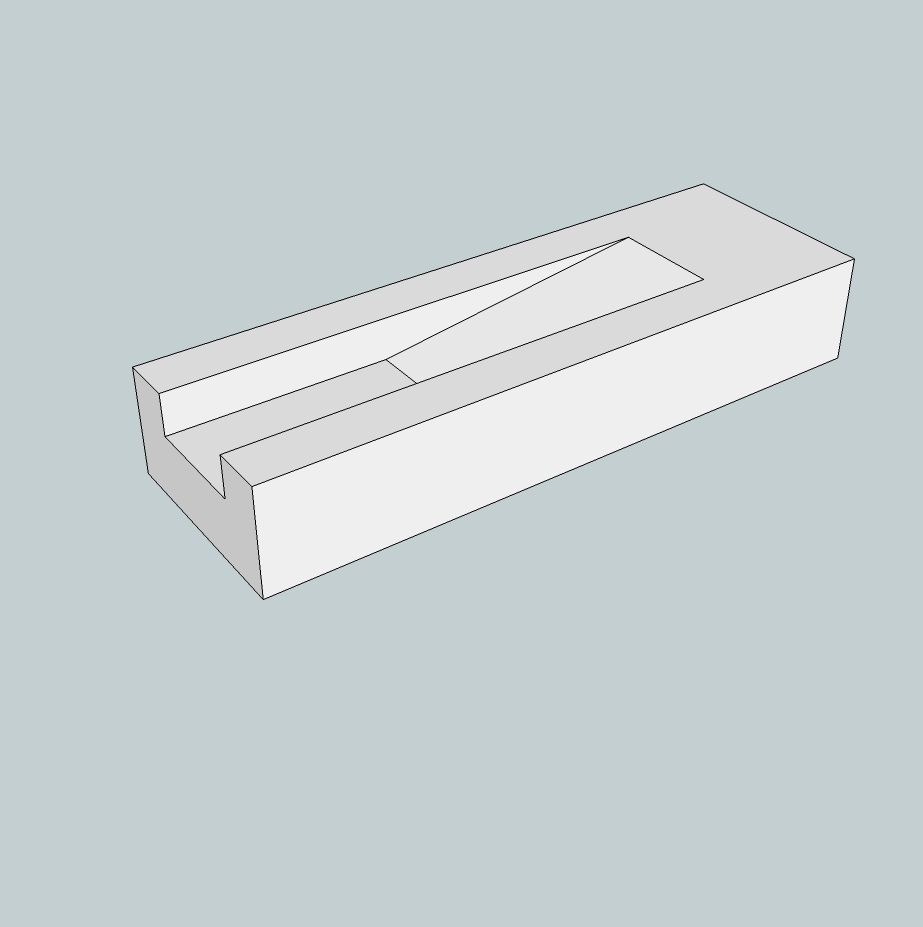
This is because the object is first only sliding over the ground, and only the front is actually 'bulldozing' into the ground/rock, while the back is just sliding over it. This is why you get the gradual start of the rut.
But what we can see in the video, looks like this:

You cannot create that kind of rut with placing something on the ground/rock, and pulling it away. Try this with only your finger and some clay or something. you will see the same thing.
That is enough to disprove your theory, and goes well with my theory of vehicle leaving tire tracks in the mud, like shown here, again:

Wow...this is getting really ridiculous now
It really is because you are not willing to think clearly.
If you take a hard object and drag it over another hard object over a period of years it will eventually wear a "rut" in it....
That I know, lets move on...
If you have ever been hiking on a trail in the woods that is a well traveled trail you will clearly see this.
I do like hiking, I go hiking about 3-5 times a year, for about 7 years now, and I have seen it. Moving on...
These tracks were not made in a single pass...they were worn in over years by people travelling the same route with the same method of pulling whatever they were pulling.
Where did I say that it was made with a single pass? Please show me?
this is likely the quarry area, or was nearby and these are the ruts formed over time by moving heavy stones in the same manner on the same path.
Here you went from possible, maybe even plausible, to incorrect and not possible.
Let me add some visuals to help you out.
If you would place some object on the ground/stone, and pull/push it, the "rut", as you say, that will be cut over the years, would look like this:

This is because the object is first only sliding over the ground, and only the front is actually 'bulldozing' into the ground/rock, while the back is just sliding over it. This is why you get the gradual start of the rut.
But what we can see in the video, looks like this:

You cannot create that kind of rut with placing something on the ground/rock, and pulling it away. Try this with only your finger and some clay or something. you will see the same thing.
That is enough to disprove your theory, and goes well with my theory of vehicle leaving tire tracks in the mud, like shown here, again:

I don't often chime in, but the parallel nature, depth, and the "cut-outs" or side roads do look very like modern train tracks. It would be
interesting to see where they start and where they go. Perhaps an industry (stone quarrying, logging) at a central area shipped product to specific
areas. They could carve tracks for the heavy carts needed to those areas. Than the cart could be guided down those tracks with little effort -
perhaps by using trained oxen or other beasts that would be sent unmanned. All you would need is someone to guide them onto one of the side tracks or
to periodically spur them on. I do not know the slopes involved, but the meandering could be designed to keep the cart moving slowly enough to not
run over the animals on a downward slope.
Just a thought....
Just a thought....
new topics
-
A man of the people
Diseases and Pandemics: 28 minutes ago -
Ramblings on DNA, blood, and Spirit.
Philosophy and Metaphysics: 51 minutes ago -
4 plans of US elites to defeat Russia
New World Order: 2 hours ago -
Thousands Of Young Ukrainian Men Trying To Flee The Country To Avoid Conscription And The War
Other Current Events: 5 hours ago -
12 jurors selected in Trump criminal trial
US Political Madness: 8 hours ago -
Iran launches Retalliation Strike 4.18.24
World War Three: 8 hours ago -
Israeli Missile Strikes in Iran, Explosions in Syria + Iraq
World War Three: 9 hours ago
top topics
-
George Knapp AMA on DI
Area 51 and other Facilities: 14 hours ago, 25 flags -
Israeli Missile Strikes in Iran, Explosions in Syria + Iraq
World War Three: 9 hours ago, 16 flags -
Louisiana Lawmakers Seek to Limit Public Access to Government Records
Political Issues: 17 hours ago, 7 flags -
Iran launches Retalliation Strike 4.18.24
World War Three: 8 hours ago, 6 flags -
Not Aliens but a Nazi Occult Inspired and then Science Rendered Design.
Aliens and UFOs: 14 hours ago, 5 flags -
Thousands Of Young Ukrainian Men Trying To Flee The Country To Avoid Conscription And The War
Other Current Events: 5 hours ago, 4 flags -
12 jurors selected in Trump criminal trial
US Political Madness: 8 hours ago, 4 flags -
4 plans of US elites to defeat Russia
New World Order: 2 hours ago, 2 flags -
Ramblings on DNA, blood, and Spirit.
Philosophy and Metaphysics: 51 minutes ago, 1 flags -
A man of the people
Diseases and Pandemics: 28 minutes ago, 0 flags
active topics
-
Mandela Effect - It Happened to Me!
The Gray Area • 112 • : CCoburn -
British TV Presenter Refuses To Use Guest's Preferred Pronouns
Education and Media • 66 • : Scratchpost -
4 plans of US elites to defeat Russia
New World Order • 8 • : Lazy88 -
So I saw about 30 UFOs in formation last night.
Aliens and UFOs • 31 • : Encia22 -
AARO/Dr Kirkpatrick-Caught Lying in UAP report.
Aliens and UFOs • 25 • : Jukiodone -
Russia Flooding
Fragile Earth • 17 • : Kurokage -
A man of the people
Diseases and Pandemics • 0 • : PrivateAngel -
The Acronym Game .. Pt.3
General Chit Chat • 7729 • : CCoburn -
It has begun... Iran begins attack on Israel, launches tons of drones towards the country
World War Three • 889 • : bally001 -
12 jurors selected in Trump criminal trial
US Political Madness • 23 • : gspatfound
